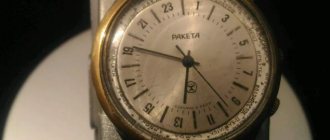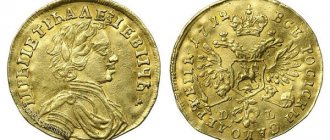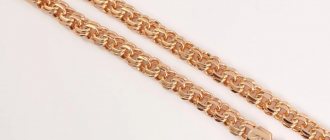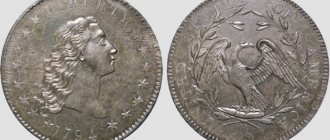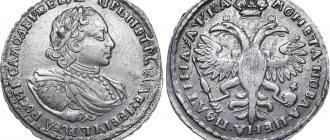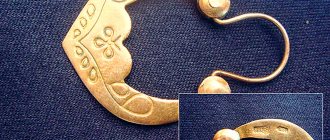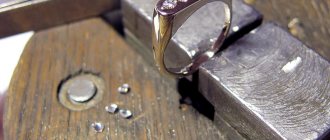Movement weight table for gold watches
Men's gold watch
| Name | Case weight | Mechanism weight | Gold weight |
| Nairi (medium) | 16,5 | 8,5-8,7 | 7,8-8 |
| Nairi (large) | 28 | 17-17,5 | 10,5 |
| Nairi square 24x24 mm | 22 | 13-13,5 | 8,5 |
| Victory | 24 | 13,5 | 10,5 |
| Moscow | 26 | 15,5 | 10,5 |
| Rodina Ø 35mm | 39 | 20 | 19 |
| Rodina Ø 32mm | 22 | 11,5 | 10,5 |
| Omega round | 37 | 25 | 12 |
| Kirovskie | 23 | 13 | 10 |
| Yerevan oval | 21 | 13 | 8 |
| Yerevan square | 26 | 15 | 11 |
| Flying flat | 21 | 13 | 8 |
| Flight oval | 22 | 13 | 9 |
| Flight oval (glass size 27x24 mm) | 28 | 16 | 12 |
| Flight with a calendar | 40,4 | 24,9 | 15,5 |
| Flight with a calendar | 40,9 | 25,25 | 15,65 |
| Flight with a calendar | 41,35 | 25,45 | 15,9 |
| Flight | 29,15 | 16,55 | 12,6 |
| Flight | 28,3 | 13,4 | 14,9 |
| Flight | 26,55 | 15,35 | 11,2 |
| Flight | 26 | 13,5 | 12,5 |
| Flight | 28,9 | 13,4 | 15,2 |
| Flight | 25,8 | 13,1 | 12,3 |
| Flight square | 20,8 | 12,4 | 8,4 |
| Flight quartz | 27,61 | 18,22 | 9,3 |
| Flight round, date on the right (Ø 32mm) | 39 | 25 | 14 |
| Capital Ø 28mm | 25 | 15 | 10 |
| Capital | 22,34 | 13 | 9,3 |
| Capital | 26,4 | 15,2 | 11,2 |
| Pennant | 21 | 13 | 8 |
| Round beam Ø 30mm | 20 | 12 | 8 |
| Beam round Ø 33mm | 32 | 21 | 11 |
| Rocket | 24 | 15 | 9 |
| Rocket glass Ø 29mm | 22 | 11 | 11 |
| Rocket glass Ø 32 mm | 35 | 21 | 14 |
| Rocket (rectangles instead of numbers) | 27 | 16 | 11 |
| XRONOGRAFE SUISSE | 35 | 30 | 5 |
| McTime rectangular 32x28 mm | 26 | 16 | 10 |
Women's gold watch
| Name | Case weight | Mechanism weight | Gold weight |
| Star | 17 | 11 | 6 |
| Rectangular star 26x17 mm | 23 | 13 | 10 |
| Zarya | 11 | 7 | 4 |
| Dawn different | 10,15 — 11,45 | 4,95 — 6,15 | 4,7 — 5,35 |
| Era Ø 14mm | 9 | 5 | 4 |
| Vein | 17,5 | 10,5 | 7 |
| Volga | 7 | 4 | 3 |
| Volga 750 sample | 5,65 | 3,6 | 2,05 |
| Glory | 8,15 | 4,2 | 3,95 |
| Glory | 9 | 5 | 4 |
| Sevan | 7,5 | 4,55 | 2,95 |
| Nairi with “ears” | 8,7 | 4,5 | 4,2 |
| Nairi Ø 14mm | 8 | 5 | 3 |
| Nairi Ø 18mm | 10 | 6 | 4 |
| Seagull rectangular 13x18mm | 11 | 6 | 5 |
| Seagull round Ø 14mm | 7 | 4 | 3 |
| Seagull round Ø 17mm | 9 | 5 | 4 |
| Seagull square | 14,05 | 4,8 | 9,2 |
| Gull | 12,45 | 5,35 | 7,1 |
| Dream | 7 | 4 | 3 |
| Dream | 7,7 | 3,75 | 3,95 |
| Ray | 10 | 6 | 4 |
| Beam small | 5,8 | 2,9 | 2,9 |
| Beam rectangular 20x14mm | 14 | 9 | 5 |
| Lyra | 10 | 6 | 4 |
| Era | 8,2 | 3,9 | 4,3 |
If you do not agree with the goods expert's assessment and reset on the movement, you can always contact a watchmaker or jeweler with a request to remove the movement from the watch. Having brought only the case of a gold watch, without the mechanism, to the pawnshop, the merchandiser will calculate the net weight of the gold.
I wish you pleasant shopping and profitable sales.
The founders created the largest manufacturer on the jewelry watch market from scratch. The next step is to convince customers that Russian watches can cost as much as a Rolex.
Text: Nikolay Grishin
In a building that looks like a museum, there are gold bars in a huge safe. Suddenly it begins to turn into a gold watch. The alarm goes off, the security guards run around in a panic and cannot understand what is happening. The advertising video, shot by IQ marketing and Fetish Film for , could be seen in the fall and winter on federal television channels.
In reality, the sentry is located in the Moscow industrial zone near the Kolomenskaya metro station. In the foundry, gold bars are lying on workbenches near the rolling machines - you can take them and hold them in your hands. A bar 70 cm long costs more than 5 million rubles. “If we screw up the composition here, the metal will not receive a sample in the Assay Office. Can you imagine the cost of a mistake?” - says the head of the foundry, Nikolai Chepelenko. Before our eyes, he cooks in a furnace an alloy of gold, silver and “secret additives” (each jeweler has their own) and prepares to smelt the next piece.
Nika, founded in 2003, has an almost full production cycle. It employs more than 570 people. Here they make molds for machines, pour gold alloy, stamp cases and manually set diamonds under a microscope in expensive models. “We would be happy to outsource something, but either our partners are raising prices, or the quality is poor,” Alexei Bogdanov, co-owner of Nika, shrugs his shoulders.
Only the watch movements themselves are not made at Nika - they are purchased in Switzerland and Japan. This is the largest jewelry watch production in the country. The closest competitor - - last year provided 45 thousand watches to the Assay Office, Nika - 224.8 thousand. The company's revenue for last year exceeded 2.4 billion rubles. Creating a new production facility on the watch market from scratch turned out to be easier than reviving the Soviet giants.
Be thrifty and don't star
Each of the four Nika shareholders has their own role: Tengiz Sanikidze plays the drums, Georgiy Mordekhashvili plays the guitar, and Elena Khitrina sings. Only Alexei Bogdanov was discovered as a child at a music school to be completely deaf. Not a single corporate party goes by without the Nika jazz band performing their hit: “Nika is coming, arrows forward.”
Any sensible business consultant will warn against creating a company between friends, especially four of them and with equal shares. But Niki’s business was born precisely out of friendship.
The main business of Alexey Bogdanov in the 1990s - investment - was engaged in trust management and provided brokerage services. The 1998 crisis practically destroyed this business. Bogdanov left it by selling his share. “It seemed to me then that in Russia I needed to do something more serious. Don’t speculate in securities, but create a product,” says Alexey.
The idea for the product was suggested by Sanikidze. As a hired manager, he organized several small jewelry workshops in Georgia and Russia. “On the one hand, there was expensive Switzerland, on the other, small Russian jewelry manufacturers, who, in addition to rings and chains, produced small, out-of-date women’s watches made of gold, “kopecks,” recalls Bogdanov. The partners decided to make “folk” gold watches. At a price of 15 thousand rubles. they would cost several times less than Swiss ones, but would have a modern design. “Gold watches are not popular among European consumers; they are produced in small numbers and are very expensive. For many Russians, it is important that the watch be gold,” says Fyodor Poludenny, director of the purchasing and exclusive sales department of the Estet jewelry house.
In 2002, the partners signed the company code - a mixture of corporate standards and universal values. For example, the wish “be thrifty” is adjacent to “don’t gossip” and “don’t be a star.” According to the code, friends cannot sell their shares and take money out of the business without the consent of the partners. “These are banal things, of course,” Bogdanov admits, “but when all partners have equal rights and responsibilities, we need clear rules of the game.”
$1 million
spent on rebranding in 2010. The figure of the goddess of victory Nike was replaced with a sign resembling a men's bow tie
The right move
The partners quickly developed the rules of the game. Creating a quality product turned out to be much more difficult. The owners of Nika purchased second-hand Turkish machines and placed them in a semi-basement in Cheryomushki. We managed to find wholesale customers at the Rosyuvelirexport exhibition: Nika was not counting on watch stores, which sell mainly Swiss and Japanese watches, but on jewelry stores. The Moscow factory started with 100-200 hours a month, and immediately complaints began to pour in.
Nika used Russian watch mechanisms, but they turned out to be unreliable: 20-30% of the watches quickly failed. Then the owners of Nika decided to purchase Swiss movements ETA, Ronda and Japanese Miyota Seiko and others. These mechanisms cost three times more than Russian ones, from 30-50 euros, but they did not break. True, in order to meet the “popular” 15 thousand rubles, the company made watches with a hollow case. Because of this, moisture and dust got inside. Tengiz Sanikidze found a way out: he noticed how the kitchen clock was designed—the mechanism was inserted into a wooden case. So at Nika they came up with and patented a technology in 2004: the mechanism is placed in a steel capsule, and a gold case is placed on top of it. The watch turns out to be heavy and strong, but at the same time less gold is spent on it. “This is the company’s know-how,” admits Fedor Poludenny, “no one else does this.”
There are fewer and fewer people who actually make watches in Russia. In the USSR there were such giants as the First and Second Moscow Sentinels and “Slava”, respectively), the Uglich Sentinel). However, according to the marketing agency Step by step, since the early 2000s, sales of Russian manufacturers have decreased by 15% annually. In terms of price, they could not compete with Chinese products; in terms of quality, they could not compete with Swiss and Japanese products. But jewelry watches are not bought to tell the time. It's more of an accessory, a decoration.
The clock has stopped
It wasn’t only Nika that tried to cross the jewelry and watch businesses. For example, people from the First Moscow Watch Factory created, and from Uglich - “Anlin”.
Jewelers also tried to expand their range by producing watches - for example, in the mid-2000s, Adamas purchased machines. But watch sales in jewelry chains account for no more than 1-2% of the assortment - this business turned out to be small and troublesome. It is necessary to constantly update the model range, purchase expensive equipment and molds. “We decided to concentrate on classic jewelry,” explains Vlada Baranova, head of public relations at Adamas. As a result, the company sold the equipment to Nike. The owners of the latter rented a new, more spacious premises on Kolomenskaya in 2007 and were just expanding their machine park.
Before Nika became profitable, its owners invested $2 million over three years. Now Nika has the widest range of watches among Russian watch manufacturers - 40 collections. In addition to gold watches, during the crisis the company began producing silver watches at prices starting from 5 thousand rubles. Now they account for 30% of turnover. At the same time, “Nika” is sold in 7 thousand jewelry stores (there are about 10 thousand in total in Russia). During the crisis, when rental rates fell, Nika even launched a chain of small specialized stores in Moscow of the same name. Now the chain has 13 points, but is teetering on the edge of profitability.
Wide retail presence is both good and bad. “We have hit the ceiling: it will no longer be possible to grow quickly through extensive development,” says Alexey Bogdanov. If before the 2008 crisis the company's revenue steadily increased by 50% per year, then at the end of 2011 the growth was only 10%.
The main consumer of Nika is women over 35 years old with average income. More than 75% of them live in the regions. To speed up the business, Bogdanov decided to attract a more affluent audience, primarily men. These people are less greedy for gold. Design and brand are more important to them.
Russian exotica
When watchmaker Vladimir Zinkevich was 15 years old, a neighbor had the imprudence to invite him on an excursion to the First Moscow Sentinel, Zinkevich laughs.
Since then, everything has changed: Vladimir’s team consists of only men. They manually assemble watches and skeletons from the Nika Exclusive series (retail price 265-500 thousand rubles). “Look at the panda’s face,” Zinkevich shows a Chinese-style watch. “If the watchmaker has uncomfortable working conditions, then the face will be sad. And ours is smiling.”
The Nika Exclusive brand went on sale in Nika’s own stores in December 2011. They are assembled by hand from gold and precious stones, using mechanisms costing from 400 euros. Some watches are made to order. For example, Zinkevich made a watch for a professional wine taster: a golden vine starts on the dial, runs through the entire movement, and on the lid turns into a sapphire drop of wine that falls into an engraved glass. The work took six months, but the client paid more than a million rubles for the watch.
In the spring, Nika Exclusive sales will start in 110 jewelry stores. At the same time, Nika began ordering watches from Konstantin Chaykin, the only Russian who is a member of the international Academy of Independent Watchmakers (AHCI). He assembles movements by hand and sells watches for $50-100 thousand. “Many people have Swiss watches, but Russian luxury models are a rarity, something new,” Bogdanov is convinced.
He plans that in a couple of years he will annually sell about 1 thousand Nika Exclusive watches worth $10 million or more. This is relatively little, considering that, for example, Rolex sells about 500 thousand copies a year. Another initiative of Bogdanov, designed for men, is jewelry accessories. Last year, in addition to watches, Nika began producing pens, cufflinks, tie and money clips, etc. Now they account for less than 1% of the company’s turnover. The basis of the assortment - over 60% - is still made up of Nika gold watches.
$25 million
This is the price of the most expensive watch in the world, 201-carat Chopard. They were released in 2008. The total weight of all stones inlaid into the watch is 200 carats
Television against Pushkin
As a man who wears a watch worth 800 thousand rubles on his wrist, Alexey Bogdanov does not limit his horizons: “The goal is to make the first Russian brand on the jewelry market.” Large jewelry holdings are promoting their own retail chains. Branding the rings, chains and earrings themselves is technically difficult. Watches and pens are another matter. Here, a recognizable brand, as Bogdanov hopes, may well become a sales driver.
Last year, Nika conducted a study of its brand awareness. The results were disappointing. Only about 3% of Russians knew the brand. To rectify the situation, the owners of Nika decided to take an extraordinary step: they invested about 150 million rubles. in a large-scale advertising campaign on TV, outdoor advertising, glossy magazines and the Internet. According to TNS Gallup Media, only Rolex spent more on promotion in the glossy last year - $2.2 million versus $2 million. “It’s a good budget for our market - the campaign was noticed,” admits Vlada Baranova from .
In the meantime, the consumption models of well-known Western brands and Nika are different. When buying, for example, Breguet, a person pays for a brand with a 230-year history, which is mentioned in the works of Alexander Pushkin. When choosing a “Nika”, a person first of all looks at how many grams of gold are contained in this watch. In order for people to pay not only for gold, but also for the Nika brand, Bogdanov and his jazz band still have to spend a lot of money and time.
At one of the foreign watch manufactories, we realized that we knew nothing about how Russian craftsmen work and decided, upon returning home, to go visit the nearest watch production. The choice fell on a brand whose work is available in any jewelry store and in most large shopping centers in the country. We became interested in how the Nika folk watches are created and how the company manages to sell models in gold cases at such obscenely low prices. The production process is described in detail, so if it gets boring, we’ll say right away - the most interesting part is at the end.
The tour of the plant began with us being given a 12-kilogram gold bar of the highest standard as an aperitif. My hands got used to this weighty block quite quickly, but just as quickly the block was removed and put back in the safe. The “Nika” clock begins with the bar you see.
The masters at Nika are no strangers to gold (and silver). They work with it all the time: they melt it down, add the necessary alloy to get that very 585th sample, then they roll the metal, turning it into long thin strips, which then go to the stamping shop.
Cases on Nika are not cast, but are made by stamping. First, blanks are cut out of a rolled metal strip, each of which the master puts into a box.
Then this box goes to another craftsman, who, using a special drawing die, gives the desired shape to flat metal blanks. The picture shows the primary blank and the blank that has been under the press.
Here are other examples. Surely some of the readers will recognize their watches in these protocases.
The lids are stamped here.
The craftsmen of a separate workshop are engaged in soldering plugs to the housings. To do this, a plate is placed on the back side of the case, the shape repeating the contour of the case, at the place of their junction the master applies solder with Vaseline, and then the case is sent to the furnace and, having passed through its ardent womb, comes out already suitable for adult watch life.
The next stage is mechanical processing: the necessary technological holes are drilled in the metal, all excess is cut off from the case, then it is polished, sent to the wash and into the hands of craftsmen who install the mechanism in it.
A woman bathing the buildings in an ultrasonic all-cleaning bath said that she was praying for the company’s workers. It is possible that through her efforts, Nika will overcome all the difficulties that arise in front of the plant.
The cases are washed from such dirt that is formed as a result of polishing.
And this is gold dust and shavings, next to which it is better not to sneeze. The weight of scattered dust can be deducted from your salary - every gram of precious metal is counted here.
The final stage of watch creation is the installation of mechanisms into cases. Nick's regular models mostly use quartz calibers, but there are also watches with automatic movements. Miyota is held in special esteem here.
And this is a compartment for storing sealed capsules in which the mechanisms are placed. As you have seen, the mechanisms used in watches are simple, and not much precious metal is used. That is why the final product is very inexpensive. Thus, the price for women's gold models starts from 10 thousand rubles. The success of Nika as a watch company lies in such an affordable price for gold watches.
But the story doesn't end there. The company's team includes a special-purpose detachment that creates exclusive models. The Nika Exclusive division makes custom watches (based on ETA movements). We found an engraver in the workshop who was working on the dial of a model ordered for a person from a well-known Caucasian republic. We cannot show these watches, but there is something to talk about besides them. Look at the fine enamel dials Nika Exclusive artists make. Each miniature is painted with a squirrel brush with one hair.
A sophisticated oil worker ordered a themed dial for his watch.
Georgy Mordekhashvili, Alexey Bogdanov, Konstantin Chaykin, Elena Khitrina and Tengiz Sanikidze
The Russian watch brand NIKA was founded in 2003. The domestic watch industry was going through a difficult moment: huge Soviet factories had virtually ceased to exist, nothing new had yet to emerge. Four enthusiasts - spouses Tengiz Sanikidze and Elena Khitrina, as well as Georgiy Mordekhashvili and Alexey Bogdanov - decided to create this new thing and founded a company, which was named after the daughter of Tengiz and Elena, and at the same time the name of the ancient Greek goddess of victory. The name justified itself: although there were dramatic moments, the NIKA jewelry watch brand has been marching through time and space for the 16th year, one might say triumphantly.
Nika watch factory
"Zarya" 2006 with disc display
I got this watch from my grandmother, who, in turn, received it as a gift from a high-ranking suitor. Their history begins in 1935. It was then that the country's leadership decided to produce women's wristwatches.
To be honest, for many years I did not even suspect the cost of this accessory. The fact that I am the owner of a watch worth 150,000 rubles only became clear a few years ago.
Their circulation is as follows:
- 1000 units were produced in 1975;
- in 1976 - 500 pcs.
In total, only 1,500 products for more than 200 million of the population of the USSR. You can’t find these on Avito now, but I found another Zarya gold watch for 50,000.
Milestones
- — 2003: first participation in a jewelry exhibition (Sokolniki, Moscow) with the first six watch models, partly made at home by Tengiz and Elena
- — 2004: first office and workshop on the Enthusiasts Highway
- — 2004: women’s watches “Iris” and “Jasmine” with diamond- and trapezoid-shaped cases
- — 2006: expansion of production area to 850 sq. m
- — 2006: invention and beginning of implementation of capsule technology - the mechanism is placed in a sealed protective capsule and, already in it, in a gold or silver case
Watches from the Dahlia collection
- — 2007: the first men's gold chronograph “Dahlia”
- — 2008: rectangular women’s watch “Olympia”
- — 2009: “Prestige” - the first men’s and women’s mechanical watches with automatic winding
- — 2010: moving “for permanent residence” to a building on the street. Rechnikov
- — 2010: beginning of a partnership with Konstantin Chaykin, now a winner of the Grand Prix d'Horlogerie de Geneve
Watch made using stained glass enamel technique
- — 2011: Vitrage – a collection of exclusive watches with handmade enamel dials
- — 2012: exclusive watch “Gagarin” - the portrait of the first cosmonaut is made on the dial with a tassel with one squirrel hair
- — 2013: creation of sub-brands QWILL and NIKA Exclusive
- — 2013: creation of NIKA GROUP
Watches from the “Mystery” collection
- — 2013: Mystery watch – a collaboration between the NIKA factory and the Konstantin Chaykin manufactory
- — 2014: White collection – watches with a snow-white enamel dial
- — 2015: ultra-thin watch, flagship of the LADY collection
- — 2015: start of production of our own movements - NIKA becomes a full-cycle watchmaking enterprise
- — 2021: the “Time of Russia” watch, showing time in all time zones of the country, is a joint work of the NIKA plant and the Konstantin Chaykin manufactory
- — 2021: collection of women's jewelry watches LOLLIES
NIKA – Made in Russia
Watches from the “Time of Russia” collection
As already mentioned, NIKA watches are jewelry. They are produced only in cases made of precious metals - 585 gold and 925 silver. The creative imagination of the brand's leaders and many employees, including those who came from the “former” watch and jewelry industries, allows them to make bold and, most often, successful experiments with both the shape of cases and technology. The invention of Tengiz Sanikidze - “case within a case” - has already been mentioned; it is worth mentioning bimetallic cases produced by diffusion welding from gold and silver.
In general, the manufacturing technology of NIKA cases is completely original: the cases are not cast, but stamped, using ultra-precise modern equipment. But the dials, made using the technique of hot or cloisonne enamel, are the product of the exclusive skill of the company's enamellers. NIKA is deservedly proud that the “Made in Russia” marking on the dials of watches of this brand really speaks of quality and strengthens the prestige of the country.
Rolex
The first, of course, was Rolex, which in the early 2000s patented a proprietary alloy called Everose (“Eternal Pink”). It has a characteristic bright pink color due to the large amount of copper, but its abundant presence and the possible appearance of patina over time was blocked by the addition of pure platinum.
It should be noted that Everose is slightly stronger than regular 18-karat gold, although the rules are not broken and the alloy contains 75 percent 999-carat gold.
Present tense
Watches from the “Lollipops” collection
Today NIKA is a large modern enterprise with a wide range of products. Exclusive models, usually produced in limited editions, with self-produced mechanisms, complex functions, and hand-finished are the pride of the brand. But equally pride and, moreover, the basis of commercial success is the serial production of watches powered by Swiss or Japanese quartz or mechanics and distinguished by beauty, recognition, noble design (gold and silver, precious, semi-precious and synthetic stones) and at the same time affordable prices. Currently, this part of the NIKI brand book includes five main collections. Below are some of the top five models.
Celebrity. Article 1231.0.9.15A: silver men's watch, rectangular case, 38.4x46.4x12 mm. Automatic caliber Miyota 9110 (Japan, power reserve 40 hours, accuracy -10/+30 sec. per day). Three hands, date, day of the week, second time zone (24-hour format), power reserve (retrograde).
“Rocket” of the Petrodvorets Watch Factory
I consider the Raketa watch to be a true work of art. Their gold models now cost about 150,000 rubles.
“Polar” is a rare series. They were manufactured in 1970 specifically for polar explorers, taking into account the specifics of their work. For example, their body is resistant to strong temperature changes.
In addition, the dial is equipped with 24 hours instead of 12. That is, the needle makes a full revolution per day. This helped researchers accurately determine day and night.
Polar watches rarely found their way onto the wrists of ordinary Soviet workers. They were produced in very small batches.
